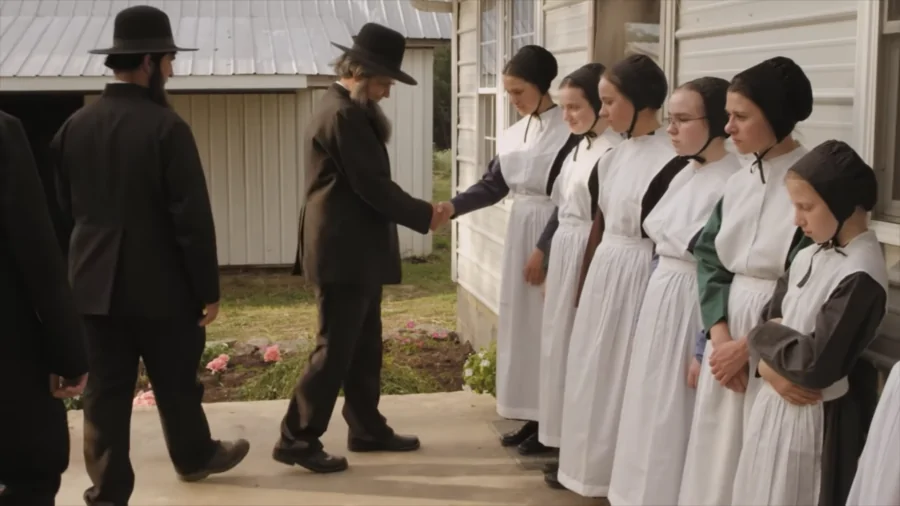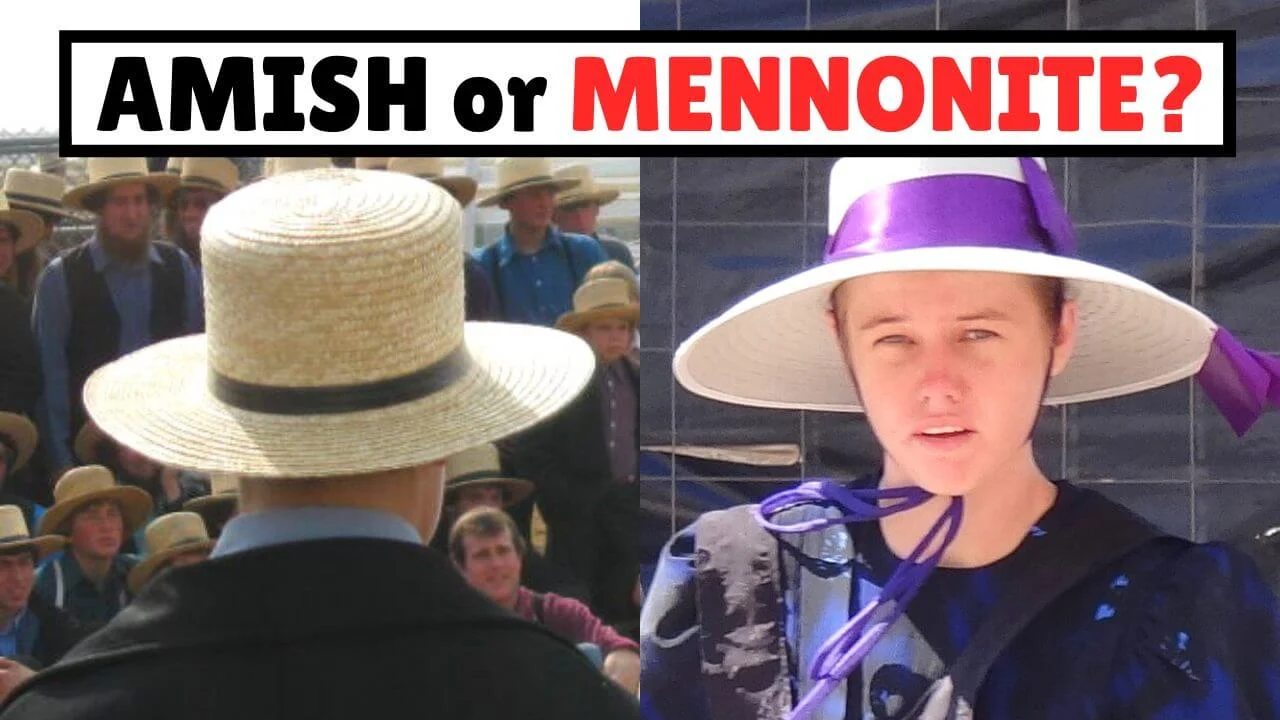Now Reading: Mennonites vs Amish: Uncovering the Key Differences
-
01
Mennonites vs Amish: Uncovering the Key Differences
Mennonites vs Amish: Uncovering the Key Differences

At a glance, the sight of a horse-drawn buggy or a family in plain, simple clothing might lead many to think of the Amish. While that’s often correct, another similar group, the Mennonites, shares many of these traditions. This often sparks curiosity about the topic of Mennonites vs Amish. Though they spring from the same religious roots and share many core beliefs, there are significant distinctions between them. Understanding these differences helps us appreciate the unique cultures and practices of each community.
This guide will walk you through their shared history, explore their differing approaches to technology, clothing, and community life, and clear up common misconceptions. By the end, you’ll have a much clearer picture of what makes each group distinct.
Key Takeaways
- Shared Anabaptist Roots: Both Mennonites and Amish originated from the Anabaptist movement in 16th-century Europe, which emphasized adult baptism and separation of church and state.
- Technology is a Major Divider: The Amish are known for their strict rejection of modern technology like public electricity and cars, while Mennonite groups vary widely, with many embracing modern conveniences.
- Clothing Styles Differ: While both value plain dress, Amish clothing is more uniform and traditional. Mennonite attire ranges from very conservative to indistinguishable from modern dress, depending on the specific group.
- Spectrum of Observance: Both faiths exist on a spectrum. Old Order Amish are the most conservative, while various Mennonite conferences, like the Beachy Mennonites, bridge the gap. More progressive Mennonites are fully integrated into modern society.
A Shared Beginning: The Anabaptist Movement
To understand the Mennonites vs Amish comparison, we must go back to the Protestant Reformation in the 1500s. During this period of religious upheaval, a radical group emerged known as the Anabaptists, which means “re-baptizers.” They believed that baptism should be a conscious choice made by adults who could profess their faith, rejecting the common practice of infant baptism. This was a dangerous stance at the time, and many Anabaptists faced severe persecution for their beliefs.
These early Anabaptists also championed the separation of church and state, pacifism (non-resistance), and living in a close-knit community of believers. One of the most influential Anabaptist leaders was a former Dutch Catholic priest named Menno Simons. His followers became known as Mennonites. For over a century, the Mennonites developed their faith and communities across Europe.
The Great Schism: The Birth of the Amish
The Amish branch emerged from the Mennonites in 1693. A Swiss Mennonite elder named Jakob Ammann felt that the Mennonite communities were becoming too lax in their discipline and were straying from the strict teachings of their ancestors. He believed in a more rigid application of their rules, particularly a practice called Meidung, or shunning.
Ammann insisted that shunned members should be completely avoided in all social and domestic situations, including eating meals with their own family. The existing Mennonite leaders found this interpretation too harsh. This disagreement over church discipline and a few other practices, like the frequency of communion and the style of dress, led to a deep division. Ammann and his followers formally split from the Mennonites, and his group became known as the Amish. This historical schism is the foundational reason for the separate identities we see today when discussing Mennonites vs Amish.
Technology and Modernity: A Defining Contrast
One of the most visible differences when examining Mennonites vs Amish is their approach to technology. This is where the two groups diverge most significantly in daily life.
The Amish Stance on Technology
The Old Order Amish are famous for their cautious and selective use of technology. They generally reject any technology that they feel could weaken the family, community, or their reliance on God. This is why they do not connect to the public electricity grid, own or drive cars, or have telephones in their homes. The goal is to prevent worldly influences from disrupting their plain lifestyle.
However, their relationship with technology is more nuanced than a simple rejection.
- Community-First Approach: Amish communities decide collectively which technologies are acceptable.
- Work vs. Home: Some technologies, like phones or electricity from generators, may be permitted for business purposes but not in the home.
- Adaptation: They use propane to power refrigerators and water heaters and may hire non-Amish drivers (“taxis”) for long-distance travel.
The Mennonite Spectrum of Technology Use
Mennonites, on the other hand, have a much wider range of practices. The most conservative groups, often called Old Order Mennonites, live very similarly to the Amish. They may drive horse-drawn buggies and limit their use of electricity. However, the vast majority of Mennonites worldwide are not so restrictive.
Progressive and mainstream Mennonites live lives that are outwardly indistinguishable from their non-Mennonite neighbors. They drive cars, use smartphones, engage with social media, and pursue higher education and professional careers. For them, faith is expressed through service, peace-building, and community engagement rather than through the rejection of modern tools. For an interesting look at global perspectives, one might browse articles on platforms like https://forbesplanet.co.uk/.
Appearance and Dress: The Plain People
The concept of “plain dress” is central to both groups, but its interpretation varies. This tradition is rooted in biblical teachings that encourage modesty and discourage vanity.
Amish Clothing: A Uniform of Faith
Amish clothing is highly standardized and serves as a clear visual marker of their identity.
- Men: Typically wear solid-colored shirts, straight-cut suits or vests without collars or lapels, and broad-brimmed straw or felt hats. They do not wear mustaches but married men grow beards.
- Women: Wear solid-colored, long-sleeved dresses with a cape over the bodice and an apron. Their hair is never cut and is worn in a bun, covered by a prayer covering, known as a kapp. The color of the kapp (white or black) often signifies marital status.
Mennonite Attire: From Plain to Modern
Mennonite dress codes are far more diverse.
- Conservative Mennonites: Their dress is similar to the Amish, but with subtle differences. For example, the dresses may be patterned, and men may not be required to grow beards.
- Mainstream Mennonites: Most Mennonites today do not practice plain dress. They follow modern clothing styles, believing that modesty is a matter of the heart and can be achieved without a specific uniform. Some women may still choose to wear a small head covering as a sign of their faith.
|
Feature |
Old Order Amish |
Conservative Mennonites |
Mainstream Mennonites |
|---|---|---|---|
|
Electricity |
No public grid connection |
Varies; some use, some don’t |
Fully embraced |
|
Transportation |
Horse and buggy |
Varies; some use buggies, many drive dark-colored cars |
Modern cars |
|
Men’s Attire |
Beard (if married), no mustache, suspenders, plain suit |
Varies; some have beards, some are clean-shaven |
Modern clothing |
|
Women’s Attire |
Plain dress with cape and apron, prayer covering (kapp) |
Plain dress (can be patterned), prayer covering |
Modern clothing; some may wear a small covering |
Language and Education
Language and education are other areas where the practices of Mennonites vs Amish show both similarities and key differences. Both groups value education, but for different purposes and to different ends.
Amish Education and Language
The Amish believe that a basic education is sufficient for their agrarian lifestyle. Children attend private Amish schools, often in one-room schoolhouses, through the eighth grade. The curriculum focuses on essential reading, writing, and arithmetic, along with German and religious instruction. Higher education is strongly discouraged as it is seen as a pathway to worldly values and careers that would pull individuals away from the community.
Most Amish are trilingual. They speak a German dialect known as Pennsylvania Dutch (or Pennsylvania German) at home. They learn High German for their religious services and Bible readings. English is taught in their schools and used for communication with the non-Amish world.
Mennonite Education and Language
Educational practices among Mennonites mirror their diversity. Conservative Mennonites may also operate their own private schools with a faith-based curriculum. However, they are generally more open to higher education than the Amish. Many mainstream Mennonites attend public schools and universities. There are several Mennonite colleges and universities in North America that are highly respected academic institutions.
Regarding language, the use of Pennsylvania Dutch is common only among the most conservative Old Order Mennonite groups. The vast majority of Mennonites today speak English as their primary language.
Community, Worship, and Social Interaction
The structure of community life and worship is another point of contrast. While both value community, the Amish are generally more insular.
Amish Community and Worship
Amish life revolves around the church district, which is a community of about 20-40 families. Worship services are held every other Sunday in a member’s home, rotating from house to house. The service is conducted in High German and lasts for several hours. During the “off” Sunday, families spend time visiting other members of the community. This closed, home-based worship strengthens their tight-knit bonds and insulates them from outside influences. The practice of Meidung (shunning) is used to enforce community norms.
Mennonite Community and Worship
Mennonites worship in dedicated church buildings, much like other Protestant denominations. Their services are typically in English and may include musical instruments like pianos and organs, which are forbidden in Amish worship. While community is very important, Mennonites are generally more engaged with the outside world. They are known for their global relief, development, and peace work through organizations like the Mennonite Central Committee (MCC). This outward focus on service is a hallmark of modern Mennonite identity, setting them apart in the Mennonites vs Amish discussion.
Frequently Asked Questions (FAQ)
Q1: Can an Amish person become a Mennonite, or vice versa?
Yes, it is possible. Individuals may choose to move between the groups based on personal conviction. It is more common for an Amish person seeking a slightly less restrictive life to join a conservative Mennonite church.
Q2: Do Mennonites and Amish interact with each other?
Yes, particularly in areas where their communities are geographically close, like Lancaster County, Pennsylvania. Conservative Mennonites and Amish may interact through business and share a mutual understanding of their Anabaptist heritage.
Q3: Are all Mennonites and Amish farmers?
No. While farming is a traditional and respected occupation, especially among the Amish, many now engage in other trades like carpentry, construction, and small business ownership. A large number of mainstream Mennonites work in a wide variety of modern professions, including medicine, education, and technology.
Q4: What are the main similarities between Mennonites and Amish?
Both groups share a common Anabaptist heritage. Their core theological beliefs include the importance of adult baptism, non-violence (pacifism), separation of church and state, and a commitment to living out their faith in a community of believers.
Conclusion: Two Paths from a Common Root
The comparison of Mennonites vs Amish reveals two communities that began as one but chose different paths in response to the pressures of the modern world. The Amish chose a path of separation, preserving their traditions by carefully limiting outside influence and technology. The Mennonites, for the most part, chose a path of engagement, seeking to live out their faith while embracing modern education, technology, and global service.
Both traditions offer a powerful testament to living a life of conviction and community. While the horse and buggy may be the most famous symbol, it represents only one end of a rich and diverse Anabaptist spectrum. Understanding the distinctions between these groups allows for a deeper appreciation of their unique histories, beliefs, and contributions to the world.

















